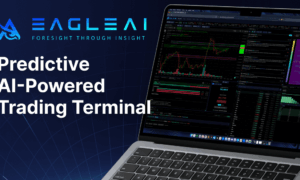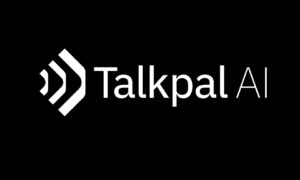Saif Ahmad
In today’s fast-paced digital landscape, businesses are under constant pressure to provide seamless, reliable IT services that enhance productivity and customer satisfaction. Traditional IT service delivery models, while effective, often fall short when it comes to managing complexity, reducing downtime, and addressing emerging challenges proactively. Enter Predictive AI and intelligent automation—two powerful tools reshaping the future of IT service delivery. By leveraging these technologies, businesses can optimize workflows, reduce costs, and offer faster, more reliable services, setting the stage for unparalleled operational efficiency.
What is Predictive AI in IT Service Delivery?
Predictive AI refers to the use of machine learning algorithms, data analytics, and artificial intelligence models to forecast potential issues, performance bottlenecks, and failure points in IT services before they occur. Unlike traditional reactive approaches that focus on addressing issues once they arise, predictive AI enables IT teams to foresee and mitigate challenges proactively, often before they even manifest.
For example, by analyzing historical data from networks, servers, and software applications, predictive AI can identify patterns or anomalies that indicate an impending issue—whether it’s a potential system failure, security breach, or performance degradation. This early detection allows IT service teams to take corrective action before end-users experience any disruption, significantly improving uptime and service reliability.
The Role of Intelligent Automation in IT Services
Intelligent automation encompasses the use of AI-driven tools and robotics to automate repetitive, manual tasks that are often time-consuming and prone to human error. In IT service delivery, this means automating routine processes such as system monitoring, software updates, patch management, incident resolution, and ticket management.
Through AI and automation, IT departments can move from reactive problem-solving to proactive service management. Routine tasks that were once labor-intensive can now be completed automatically, freeing up valuable human resources for higher-value strategic initiatives. Automation also enhances service quality by reducing the risk of human error and ensuring consistency in performance.
Moreover, intelligent automation enables businesses to scale their IT operations without increasing overhead costs. For example, AI-driven automation tools can handle an increase in service requests or network traffic without requiring additional personnel, making IT service delivery more agile and adaptable to the growing demands of a digital-first world.
Key Benefits of Predictive AI and Intelligent Automation in IT Service Delivery
1. Reduced Downtime and Faster Incident Resolution
Predictive AI plays a crucial role in minimizing downtime by detecting potential issues before they lead to service interruptions. Whether it’s a failing server, a security vulnerability, or a slow application, AI can alert IT teams to these problems early. By resolving these issues proactively, businesses can significantly reduce unplanned downtime, ensuring continuous, uninterrupted service for end-users.
Additionally, intelligent automation enhances incident resolution by automating troubleshooting and recovery processes. Instead of waiting for human intervention, automated systems can quickly identify the root cause of an issue and implement solutions, leading to faster recovery times and improved system availability.
2. Improved Resource Allocation and Cost Efficiency
One of the most significant advantages of predictive AI and automation is their ability to optimize resource allocation. With predictive analytics, IT teams can forecast system demands and allocate resources accordingly. This not only ensures that IT infrastructure is appropriately scaled but also helps avoid overprovisioning, which can lead to unnecessary expenses.
Automation also drives cost efficiency by reducing the need for manual intervention in routine tasks. By streamlining operations, businesses can lower labor costs and reallocate IT staff to more strategic activities, such as innovation or business transformation projects.
3. Enhanced Security and Compliance Management
Security threats are constantly evolving, and traditional IT security measures often struggle to keep up. Predictive AI helps bolster security by analyzing network traffic, user behavior, and system logs to identify unusual activity that could indicate a potential cyber threat. By catching these threats early, businesses can prevent data breaches and other security incidents before they escalate.
Moreover, AI can help automate compliance management by monitoring IT systems for adherence to regulatory requirements. Predictive models can flag potential non-compliance issues, allowing businesses to address them proactively and avoid costly penalties or legal issues.
4. Optimized Service Delivery and User Experience
Predictive AI and automation play an integral role in improving the overall IT service experience for end-users. By anticipating user needs and potential issues, AI can ensure that services are delivered faster, more efficiently, and with fewer disruptions. For instance, AI can predict when a user might need additional resources for a specific task or when an application might be experiencing slowdowns, allowing IT teams to take preemptive action.
Intelligent automation also improves service delivery by providing 24/7 support without requiring constant human oversight. AI-driven chatbots and virtual assistants can handle common service requests, such as password resets or software installations, ensuring that users receive quick responses at any time of day or night.
Real-World Applications of Predictive AI and Automation in IT Service Delivery
1. Predictive Maintenance
In industries such as manufacturing or data centers, predictive AI is used for predictive maintenance. By monitoring the health of critical infrastructure, AI can predict when equipment is likely to fail, enabling IT teams to perform maintenance activities before a breakdown occurs. This proactive approach reduces downtime, extends the lifespan of equipment, and minimizes repair costs.
2. Automated IT Support and Service Desk
Service desks are often overwhelmed with support requests, many of which are repetitive and straightforward. Intelligent automation can automate the handling of common service requests, such as troubleshooting hardware issues, resetting passwords, or providing software updates. This allows IT support teams to focus on more complex, high-priority issues while enhancing user satisfaction with faster response times.
3. AI-Driven Monitoring and Performance Optimization
Predictive AI can continuously monitor system performance, identifying trends and anomalies in real-time. For instance, AI can detect an increase in traffic on a specific server and predict potential bottlenecks before they occur. IT teams can then take corrective measures, such as load balancing or scaling resources, to ensure that performance remains optimal. This leads to enhanced user experiences and ensures that IT infrastructure remains resilient to high demands.
Conclusion: The Future of IT Service Delivery with Predictive AI and Automation
The integration of predictive AI and intelligent automation is fundamentally changing how businesses approach IT service delivery. By shifting from reactive to proactive service management, companies can improve efficiency, reduce costs, enhance security, and deliver superior user experiences. As AI technologies continue to evolve, the potential for automation-driven improvements in IT service delivery will only grow, offering organizations the opportunity to stay ahead of the competition and embrace a future where technology works smarter, not harder.
In the coming years, predictive AI and automation will likely become the cornerstone of IT operations, driving continuous improvement and enabling businesses to meet the ever-growing demands of the digital age. Organizations that embrace these technologies today will be well-positioned to thrive in tomorrow’s fast-paced, data-driven world.
Written By: Saif Ahmad





























